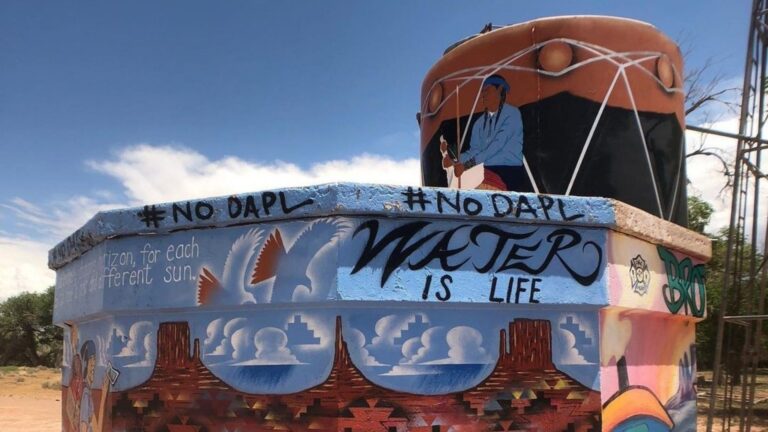Covid-19 has increased awareness of the importance of sanitation globally; however, many face challenges meeting hygiene needs due to difficulties accessing clean water. Native Americans in the United States are particularly hard hit by this issue.
In the Global North, most people do not think about how they will access clean water. It’s as easy as turning on the tap. Many regard development as a concern of the Global South, yet even one of the most developed countries in the world, the United States, faces issues providing its population with essential commodities. The first report on water access in the United States was conducted by the nonprofit organizations Dig Deep and US Water Alliance and found that “Native American households are 19 times more likely than white households to lack indoor plumbing”. Recently, as covid-19 aggravated sanitation problems, the issue of water access received more public interest.
The Navajo Nation, located in the Southwest of the United States, is particularly affected by the issue. About one third of households in the Navajo Nation lack indoor plumbing, and they have therefore endured one of the highest covid-19 infection rates in the United States.
Water access in the United States is deeply divided by race.
The lack of clean water leads to various challenges in the daily life of the Navajo Nation and affects their well-being. Due to contaminated ground water, many have to drive miles to purchase water. This increases costs due to gas usage and takes time away from other potential activities. Furthermore, residents without indoor plumbing consumed more processed foods and soda to save water. This leads to increased health issues. For example, living in the Navajo nation doubles to quadruples the risk of having type 2 diabetes compared to white Americans.
The Navajo Water Project aims to eliminate the issue by supplying water tanks that provide hot and cold running water. The tanks store up to 1200 gallons (4542.5 liters) of water which lasts about one week and are then refilled by the project. This greatly increases the amount of water a household has available.
Many on the Navajo Reservation without running water had less than ten gallons (37.85 liters) of water at any given moment, 18 times less than what the average American uses in one day.
When the U.S. invested in water infrastructure, many Native American Nations were left out of the plans due to the structure of Native American reservations within the U.S. This led to the problems facing Native American Nations today. According to Dig Deep, it is possible for the U.S. to provide water access to all. However, those living in the reservations feel overlooked by the federal government, as illustrated by a quote by the Navajo Nation President, Jonathan Nez: “We are United States citizens but we’re not treated like that. You can hear the frustration, the tone of my voice. We once again have been forgotten by our own government”.

